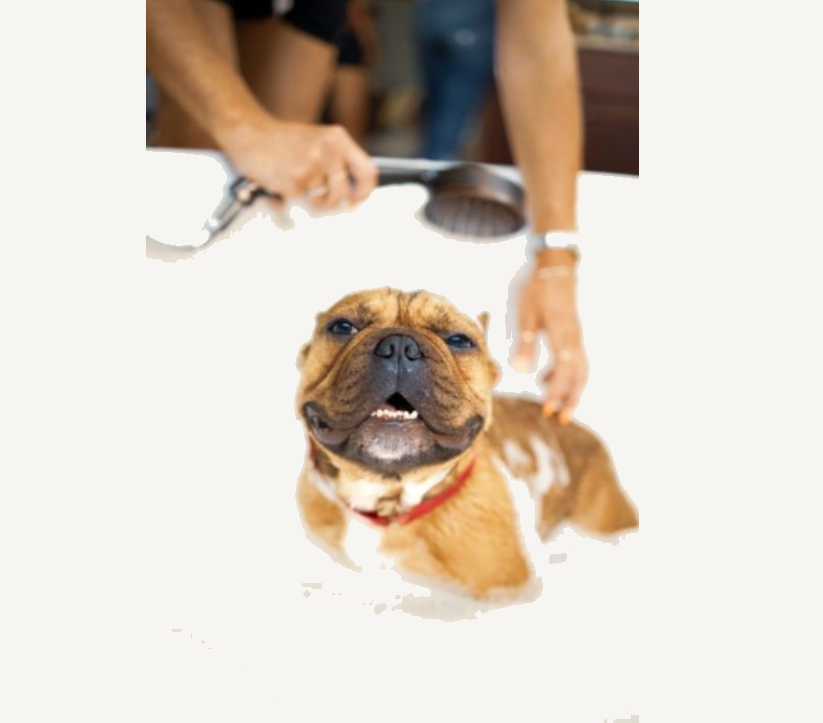
Ah, the age-old question that plagues dog owners across the land: how often should I bathe my dog? It’s a question that can spark heated discussions, send you down internet rabbit holes, and leave you feeling more confused than a dog chasing its tail in a whirlwind. But fear not, fellow dog lovers, for I’m here to shed some light (and hopefully a few suds) on this canine conundrum.
First things first, let’s establish a crucial fact: there’s no one-size-fits-all answer. Every dog, like every snowflake (or muddy paw print), is unique. What works for your neighbor’s Chihuahua might be a disaster for your Labrador retriever. So, before you grab the shampoo and turn your bathroom into a doggy spa, let’s delve into the factors that influence your pup’s bath schedule.
Breed: A Tale of Coats and Oils
Think of your dog’s breed as the first clue in the “Great Dog Bath Mystery.” Breeds like Retrievers, Basset Hounds, and Cocker Spaniels have naturally oily coats. These oils help keep their skin and fur healthy, but they can also lead to a quicker buildup of dirt, debris, and that oh-so-special “doggy” odor. These pups might benefit from a bath every 4-8 weeks, combined with regular brushing to distribute those natural oils evenly.
On the other hand, breeds like Poodles, Yorkshire Terriers, and Shih Tzus have long, non-shedding coats. These beauties require more frequent baths, typically every 4-6 weeks, to prevent matting and maintain a healthy coat. Hairless breeds like Chinese Cresteds and Xoloitzcuintlis have a unique challenge. While they might not technically require baths, their oily skin can benefit from weekly wipes or gentle baths with special shampoos. Don’t worry, these breeds won’t turn into sudsy puddles – just think of it as a spa day for your hairless wonder!
Coat Type: More Than Just Short or Long
It’s not just the length of your dog’s fur that matters, but also its texture. Double-coated breeds like Huskies and Malamutes have an undercoat and a topcoat. While they might not need frequent baths, regular brushing is crucial to remove loose fur and prevent shedding mayhem. Short-haired breeds like Beagles and Dachshunds can usually go longer between baths, every 2-3 months being the sweet spot. However, if your short-haired adventurer enjoys frequent mud baths in the backyard, you might need to adjust their schedule accordingly.
Activity Level: From Couch Potato to Mud Monster
Just like humans, the more active your dog is, the more likely they are to pick up dirt, dust, and other fun “extras” on their adventures. Think of a Labrador retriever who loves a good swim in the lake – they’ll probably require more frequent baths than a lapdog who prefers the comfort of the couch. Remember, a dirty dog is a happy dog (sometimes), but a neglected one can develop skin issues. Use your best judgment and adjust their bath schedule based on their activity level.
Skin and Health Conditions: When in Doubt, Consult the Vet
Sometimes, the “Great Dog Bath Mystery” takes a turn for the complex. If your dog suffers from allergies, skin infections, or dry/oily skin, their bathing needs might be different. In these cases, consulting your veterinarian is crucial. They can help you determine the best bathing frequency, recommend specific shampoos, and provide expert guidance for managing your pup’s unique needs.
The Bathing Basics: A Gentle Guide
Now that you have a better understanding of the factors influencing your dog’s bath schedule, let’s talk about the basics. As mentioned earlier, every 1-3 months is a good general guideline for healthy dogs. However, remember, this is just a starting point – adjust it based on your dog’s individual needs.
Here are some additional tips to ensure your dog’s bath time is a positive experience:
- Use dog-specific shampoo and conditioner. Human products can strip your dog’s natural oils and irritate their skin.
- Skip the harsh scrubs and excessive sudsing. You’re not trying to remove barnacles from a pirate ship!
- Be gentle and patient. Some dogs aren’t fans of bath time, so make it a positive experience with lots of praise and treats.
- Don’t forget the power of brushing! Regular brushing helps remove dirt, distribute natural oils, and prevent matting, reducing the need for frequent baths.
- **Most importantly, avoid over-bathing! It can dry out your dog’










